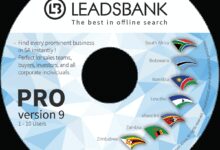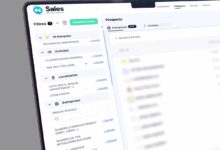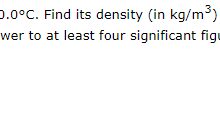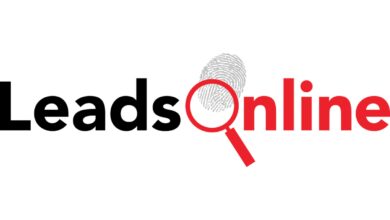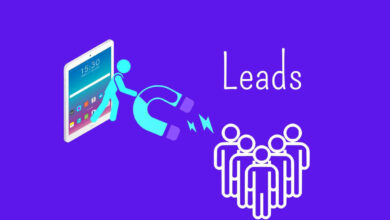Leads Definition: 7 Powerful Insights You Must Know
Ever wondered what exactly a ‘lead’ means in business? Let’s break down the leads definition in a way that’s easy to grasp, yet packed with value for marketers and entrepreneurs alike.
Leads Definition: What Exactly Is a Lead?

At its core, the leads definition refers to a person or organization that has shown interest in your product or service. This interest can come from various actions—filling out a form, subscribing to a newsletter, downloading a whitepaper, or even engaging with your social media content. A lead is not yet a customer, but they are one step closer to becoming one.
Why the Leads Definition Matters in Sales and Marketing
Understanding the precise leads definition is crucial because it sets the foundation for your entire sales funnel. Without clarity on what constitutes a lead, businesses risk misallocating resources, targeting the wrong audience, or failing to nurture prospects effectively.
- Leads are the starting point of customer acquisition.
- They help measure marketing campaign effectiveness.
- They inform sales strategies and resource planning.
“A lead is not just a name and email—it’s a potential relationship waiting to be developed.” — HubSpot
Types of Leads Based on the Leads Definition
Not all leads are created equal. Based on the standard leads definition, we can categorize them into several types depending on their level of engagement and readiness to buy:
Marketing Qualified Lead (MQL): Someone who has engaged with your marketing efforts but isn’t ready for a sales call.Sales Qualified Lead (SQL): A lead that marketing has passed to sales because they’ve shown buying intent.Product Qualified Lead (PQL): Common in SaaS—users who’ve interacted with your product (e.g., free trial) and shown signs of conversion potential.Information Qualified Lead (IQL): Someone who has explicitly requested information about your offering.Leads Definition vs.
.Prospects: What’s the Difference?While often used interchangeably, the terms ‘lead’ and ‘prospect’ have distinct meanings within the leads definition framework.A lead is anyone who has shown initial interest.A prospect, however, is a lead that has been qualified and is actively being pursued by the sales team..
Key Differences Between Leads and Prospects
The distinction lies in qualification and intent. Here’s how they differ:
- Leads are unqualified; they may have simply signed up for a newsletter.
- Prospects are pre-qualified leads with a demonstrated need, budget, authority, and timeline (commonly known as BANT criteria).
- Every prospect starts as a lead, but not every lead becomes a prospect.
How Qualification Transforms a Lead into a Prospect
The transformation from lead to prospect involves a process called lead qualification. This process typically includes:
- Assessing demographic fit (e.g., job title, company size).
- Evaluating behavioral signals (e.g., repeated website visits, content downloads).
- Engaging in direct conversations (e.g., discovery calls).
Tools like Salesforce and HubSpot automate much of this process, helping teams prioritize high-potential leads.
Leads Definition in Digital Marketing: How Leads Are Generated
In the digital world, the leads definition expands to include how leads are captured online. Digital marketing channels play a pivotal role in attracting and converting leads through targeted strategies.
Common Digital Channels for Lead Generation
Businesses use a variety of digital platforms to generate leads. Each channel aligns with the modern interpretation of the leads definition:
Search Engine Optimization (SEO): Attracts organic traffic by ranking for keywords related to your offerings.For example, someone searching for “best CRM for small business” might land on your blog and convert into a lead.Pay-Per-Click (PPC) Advertising: Platforms like Google Ads allow you to bid on keywords and drive targeted traffic to landing pages designed to capture leads.Social Media Marketing: LinkedIn, Facebook, and Instagram are used to engage users and direct them to lead capture forms..
Email Marketing: Nurtures existing leads and re-engages cold ones through personalized content.Content Marketing: Offers value through blogs, webinars, and eBooks in exchange for contact information.Lead Capture Mechanisms in Digital Marketing
Once traffic arrives, businesses use specific tools to convert visitors into leads.These mechanisms are central to the practical application of the leads definition:.
- Landing Pages: Dedicated pages with a single goal—converting visitors into leads via a form.
- Lead Magnets: Free resources (e.g., templates, checklists) offered in exchange for an email address.
- Chatbots: AI-powered tools that engage visitors in real-time and collect basic information.
- Web Forms: Embedded on websites to capture user details during browsing.
According to Neil Patel, effective lead capture can increase conversion rates by up to 50% when optimized correctly.
Leads Definition in Sales Funnel Stages
The leads definition evolves as a lead progresses through the sales funnel. Understanding this evolution helps businesses tailor their messaging and engagement strategies at each stage.
Top of Funnel (TOFU): Awareness Stage
At this stage, leads are just becoming aware of a problem or need. They may not know your brand yet. The goal is to attract them with educational content.
- Content types: Blog posts, infographics, social media content.
- Lead behavior: General browsing, keyword searches.
- Conversion goal: Capture contact info via lead magnets.
Middle of Funnel (MOFU): Consideration Stage
Here, leads are evaluating solutions. They’ve engaged with your brand and are considering options. This is where the leads definition shifts from awareness to intent.
- Content types: Case studies, comparison guides, webinars.
- Lead behavior: Repeated visits, downloading product brochures.
- Conversion goal: Nurture with targeted emails and retargeting ads.
Bottom of Funnel (BOFU): Decision Stage
Leads at this stage are ready to buy. They’ve been qualified and are comparing final options. The leads definition now includes high-intent actions.
- Content types: Free trials, demos, consultations.
- Lead behavior: Requesting pricing, contacting sales.
- Conversion goal: Close the sale with personalized offers.
Leads Definition: The Role of CRM Systems
Customer Relationship Management (CRM) systems are essential for managing leads effectively. They provide a centralized platform to track, organize, and nurture leads based on the leads definition.
How CRM Tools Enhance Lead Management
CRMs like Zoho CRM and Pipedrive help businesses automate and streamline lead handling. Key features include:
- Lead scoring: Assigning points based on engagement to prioritize follow-ups.
- Workflow automation: Sending follow-up emails or assigning tasks when a lead takes action.
- Integration with marketing tools: Syncing data from email campaigns, ads, and websites.
- Analytics and reporting: Tracking conversion rates and ROI from lead sources.
Best Practices for Using CRM in Lead Tracking
To maximize the value of a CRM in relation to the leads definition, follow these best practices:
- Keep data clean and updated—duplicate or outdated entries reduce efficiency.
- Set clear lead qualification criteria within the CRM.
- Train sales and marketing teams to use the system consistently.
- Use segmentation to personalize communication based on lead behavior.
Leads Definition: Measuring Lead Quality and Conversion
Not all leads are valuable. The true measure of success lies in lead quality, not just quantity. This aspect of the leads definition focuses on how likely a lead is to convert into a paying customer.
Key Metrics for Evaluating Lead Quality
Businesses should track several KPIs to assess lead performance:
- Conversion Rate: Percentage of leads that become customers.
- Cost Per Lead (CPL): How much you spend to acquire one lead.
- Lead-to-Customer Rate: Measures how many leads actually close.
- Average Deal Size: Helps determine the revenue potential of leads from different sources.
- Time to Conversion: How long it takes for a lead to move through the funnel.
How to Improve Lead Quality
Improving lead quality starts with refining your targeting and messaging. Consider these strategies:
- Use precise targeting in ads (e.g., LinkedIn job titles, Facebook interests).
- Create content that speaks directly to your ideal customer profile (ICP).
- Implement lead scoring to focus on high-intent individuals.
- Align sales and marketing teams on what constitutes a qualified lead.
A study by MarketingProfs found that companies with aligned sales and marketing teams see 36% higher customer retention and 38% higher sales win rates.
Leads Definition: Common Mistakes and How to Avoid Them
Even experienced marketers make errors when interpreting or applying the leads definition. Recognizing these pitfalls can save time, money, and missed opportunities.
Overvaluing Quantity Over Quality
One of the most common mistakes is chasing high lead volume without assessing quality. A campaign that generates 1,000 leads but converts only 1% is less effective than one generating 200 leads with a 10% conversion rate.
- Solution: Focus on targeted campaigns and use lead scoring to filter out low-potential leads.
Poor Follow-Up and Nurturing
Many leads are lost simply because they aren’t followed up with promptly or consistently. Research shows that the odds of qualifying a lead drop by 80% if contact isn’t made within the first 24 hours.
- Solution: Automate follow-up sequences using email marketing tools like Mailchimp or ActiveCampaign.
Misalignment Between Sales and Marketing
When sales and marketing teams have different definitions of what a ‘lead’ is, friction occurs. Marketing might pass unqualified leads to sales, leading to frustration and inefficiency.
- Solution: Establish a Service Level Agreement (SLA) between teams defining lead criteria, response times, and feedback loops.
Leads Definition: Future Trends in Lead Generation
The concept of the leads definition is evolving with technology and consumer behavior. Staying ahead of trends ensures your lead generation strategies remain effective.
Rise of AI and Predictive Lead Scoring
Artificial Intelligence is transforming how leads are identified and prioritized. Predictive lead scoring uses machine learning to analyze historical data and predict which leads are most likely to convert.
- Tools like InsideSales and People.ai offer AI-driven insights to optimize outreach timing and channel selection.
- AI chatbots now qualify leads in real-time, reducing manual effort.
Privacy-First Lead Generation
With increasing data privacy regulations (e.g., GDPR, CCPA), the way leads are collected is changing. Consent-based marketing is becoming the norm.
- Businesses must be transparent about data usage.
- Zero-party data (information willingly shared by users) is gaining importance over third-party data.
- Opt-in forms and clear privacy policies are now essential components of lead capture.
Hyper-Personalization in Lead Nurturing
Generic follow-ups are losing effectiveness. Modern consumers expect personalized experiences based on their behavior and preferences.
- Use dynamic content in emails and landing pages.
- Leverage CRM data to tailor messaging (e.g., referencing past downloads or pages visited).
- Segment leads not just by demographics, but by intent and engagement level.
What is the basic leads definition?
The basic leads definition is a person or entity that has shown interest in your product or service, typically by providing contact information or engaging with your brand in a measurable way.
How is a lead different from a customer?
A lead is a potential customer who has expressed interest but hasn’t made a purchase yet. A customer is someone who has completed a transaction and bought your product or service.
What are the main types of leads?
The main types include Marketing Qualified Leads (MQL), Sales Qualified Leads (SQL), Product Qualified Leads (PQL), and Information Qualified Leads (IQL), each representing different stages of engagement and readiness to buy.
How do you generate high-quality leads?
Focus on targeted content, precise audience segmentation, lead scoring, and multi-channel nurturing. Align sales and marketing teams and use CRM tools to track and optimize performance.
Why is lead qualification important?
Lead qualification ensures that sales teams spend time on prospects most likely to convert, improving efficiency, reducing wasted effort, and increasing overall conversion rates.
Understanding the leads definition is more than just knowing a term—it’s about mastering the foundation of customer acquisition. From identifying what a lead is to nurturing them through the funnel, every step impacts your bottom line. By leveraging digital tools, aligning teams, and focusing on quality, businesses can turn interest into revenue. Stay ahead by embracing AI, personalization, and privacy-conscious strategies in your lead generation efforts.
Further Reading:
